Lorem ipsum dolor sit amet, consetetur sadipscing elitr, sed diam nonumy eirmod tempor invidunt ut labore et dolore magna aliquyam erat, sed diam voluptua. At vero eos et accusam et justo duo dolores et ea rebum. Stet clita kasd gubergren, no sea takimata sanctus est Lorem ipsum dolor sit amet. Lorem ipsum dolor sit amet, consetetur sadipscing elitr, sed diam nonumy eirmod tempor invidunt ut labore et dolore magna aliquyam erat, sed diam voluptua. At vero eos et accusam et justo duo dolores et ea rebum. Stet clita kasd gubergren, no sea takimata sanctus est Lorem ipsum dolor sit amet.
There are many foods you can still enjoy on a gluten free diet. Gluten free food falls into the following categories: Naturally Gluten Free Foods Many foods are naturally gluten free. These include: fresh fruit, vegetables, rice, potato, corn, plain meat (not sausages), fish, eggs, cheese, milk, most yoghurts, pulses (peas, beans and lentils), fats and oils. There are many grains that are naturally gluten free, for a full list please refer to our list of Gluten Free Grains/Flours. Products Labelled Gluten Free Products manufactured in New Zealand and Australia, can only be labelled ‘gluten free’ if they contain 'no detectable gluten'.
However there are many imported products which are not labelled under the New Zealand food labelling law. Products displaying the Crossed Grain logo These are certified by Coeliac New Zealand, and are independently tested to be safe for people, with coeliac disease and those on a gluten free diet. So look for products that carry the Crossed Grain Logo when doing your grocery shopping, it provides assurance that a product is safe and will eliminate the need for label reading.
Products that are Gluten Free by Ingredient In New Zealand and Australia any ingredient in a product that is derived from wheat, rye, barley or oats, must be declared on the ingredients panel. Note though that this only applies to products that are manufactured in New Zealand and Australia.
Research by our patron Dr Robert Anderson has shown that approximately one in five people with coeliac disease react to pure, uncontaminated oats. Since we cannot determine who the one in five is, who reacts to pure oats and we know that gut damage can occur even without symptoms the advice of both Dr Anderson and Coeliac New Zealand is that oats should not be consumed. The only exception is if you receive a gastroscopy/biopsy before commencing eating oats, and after you have been consuming them for a time.
This is currently the only test that can say whether it is safe for you to consume oats on a gluten free diet. Talk to your Dr. about whether this could be right for you. Once you start your gluten-free diet your symptoms should gradually improve and your gut will start to heal. It can take from 6 months to five years (and sometimes longer) for your gut to fully heal. Coeliacs need strict gluten-free diet for life. Eating even small amounts of gluten can trigger your immune system and cause your symptoms to return, so adherence to a coeliac-safe gluten free diet is important for long-term health. Recognise the common sources of gluten and what to avoid and always check food labels to ensure the food you are consuming is gluten free. The allergywell.co.nz food finder can also be a helpful guide.
Understanding the FSANZ Food Standards
The Australia and New Zealand food standard code states that food labelled as ‘gluten free’ must contain:
- no detectable gluten
- no oats nor their products
- no cereals containing gluten that may have been malted nor their products
NZ and Australia's gluten free standard is the strictest in the world and provides detection of gluten down to 3 parts per million (3ppm) which is defined as ‘nil detected’. FSANZ also has a low gluten standard of less than 20ppm, or 20mg per 100g which is compliant with the CODEX standard – see below for guidelines on whether low gluten products may be suitable for you.
All "Gluten Free" products and ingredients have to comply with these standards:
Standard 1.2.3 – 4: Mandatory declaration of certain foods
or substances in food
Standard 1.2.7 – 13: Nutrient content claims
Schedule 4-3: Gluten Free Definition
If a product label says "Contains Gluten", "Contains traces of gluten" or "Low-gluten" it can often have sources of gluten that are not included in the list of ingredients and should, therefore should be avoided by individuals following a strict gluten free diet.
Precautionary statements such as "May contain traces of gluten" are not legally required to be included on product labels. The use of such statements may result in the food being eaten by someone "at risk" or being avoided by individuals when it is safe. The best option is to directly contact the food manufacturers for further information as avoiding all foods with this precaution may not always be necessary.
Coeliac New Zealand does not recommend "low-gluten" products (as per the FSANZ standard) as being suitable for those newly diagnosed with coeliac disease.
Who Should I Contact if I have accidentally been "Glutened"?
If you are concerned that a food manufacturer has failed to declare gluten as a food allergen on their labels, or information about this is misleading, please contact the Ministry of Primary Industries NZ (MPI) at 0800 00 83 33 / This email address is being protected from spambots. You need JavaScript enabled to view it.
